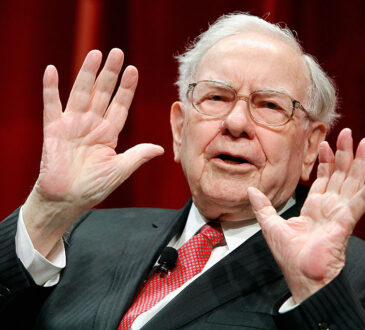
I often get calls asking about the Iraqi dinar. Initially, I just dismissed the questions and put-off the requests, informing clients and other investors that we don’t employ or recommend currency-based strategies. At the time, this was the result of only superficial research. However, after a recent question about another foreign currency, the Vietnamese dong, I felt it was time to truly dig into what’s going on and write the definitive article on where these currency strategies fit into both retirement and overall investment portfolios.
In my opinion, they don’t fit anywhere! Let me reiterate that; the Iraqi dinar and the Vietnamese dong do not fit into a retirement portfolio in any way, shape, or form. Both monetary units are often referred to as “scam” currencies for good reason. Countless warnings and blood soaked war stories are prevalent online, but to my surprise investors continue to fall for it, throwing good money at a very bad idea.
As it turns out, the scams success is based on a powerful combination of greed, apparent inside information, and the ability to see, feel, and touch the currency. In fact, the most compelling part of situation is that both the Iraqi and Vietnamese currencies are legitimate and tangible. Investors can not only hold them, but also show their spouse, friends and even fold them up and put them in their wallets. Furthermore, they are part of a regulated industry and available for purchase at a few major US Banks. All factors that seem to make investing in either of them a very credible and enticing opportunity to outsmart Wall Street, best fellow investors, and get rich quick by uncovering secrets the government doesn’t want us to know.
Yet, as you already know, if it sounds too good to be true…investors should run like heck. I reached out to several currency exerts to help me explain the ins and outs of this ridiculous business in an effort to help retirees and other investors avoid falling victim to this and similar currency scams going forward.
Reid Kirchenbauer of InvestAsian.com says, “The dinar and dong, along with many other thinly traded currencies, are hard to get at a fair price in the United States.” One US bank Kirchenbauer called was offering one million Vietnamese dong for $56.90, which works out to 17,574 VND per dollar. However, he found the exchange rate much higher at Vietnam’s Agribank. It will sell 21,420 dong per U.S. dollar (not including ordinary fees). Right off the bat, then, there’s a discrepancy representing a more than a 20% decrease in value.
Kirchenbauer goes on to say, “It’s difficult for most people to receive the actual value that these currencies trade at. If banks in the US choose to trade them, they make the spreads very wide so that they can make a large enough profit to justify the potential holding period.”
Scott Smith, Senior Market Analyst for Cambridge Global Payments highlighted another reality facing investors in these currencies. “The biggest challenge to recouping your initial investment is finding someone to buy those currencies back. It’s like shopping for a house cat, but buying a tiger instead, and then finding out you are allergic to cats. It might be easy to find someone to buy your house cat, but finding a suitable home for a tiger would be much more difficult.”
Realizing that these currencies are illiquid, thinly traded and much easier to buy than sell is just the first step in debunking them as viable investment options. The appeal to most unknowing investors is the expectation that these currencies will be revalued on a dollar-for-dollar basis with the US dollar. As you can imagine, that would make those holding either currency instant millionaires overnight. This is where greed enters the scam and investors compound their losses. They don’t just shell out $50-$60 for a cool million. They’re usually lured into buying tens of millions in foreign currency in hopes of spectacular wealth, only to be left holding money that isn’t worth the paper it’s printed on.
According to Mark Whitmore, founder and portfolio manager of Whitmore Capital, LP – a hedge fund that invests exclusively in currencies – “the likelihood of either currency ever trading on a par value to the US dollar is preposterous.” He says that dinar advocates often note that Kuwait’s currency appreciated hundreds of percent after Iraq left the country following its failed invasion. What Whitmore drives home, though, that it’s an apples to oranges comparison. “The official exchange rate between the Kuwaiti dinar and the US dollar never fluctuated even 10%,” he said. “The unofficial black market exchanges were trading Kuwait dinar at huge discounts to individuals who panicked thinking that Kuwait could be annexed by Iraq and Kuwait’s currency might be abolished.” As it turned out, there was no revaluation and, thus, no basis for the kind of “relief rally” that would-be sellers suggest will eventually happen.
Whitmore is relentless with facts and figures, noting that in 2003 the Iraqi government replaced its old currency (known as “Swiss” dinars) with a new currency and offered to convert 150 new dinars to one old dinar. The dinar became 99.3% less valuable overnight. He also brought to light a slight problem with buy and sell economics. “There are now over 35 trillion dinars in circulation (about three times as many dinars as there are US dollars). Iraq has increased the amount of dinars in circulation well over a thousand-fold and, ironically, over 80% of these dinars exist outside of Iraq, where they are generally not convertible! The implication is that most dinars are not being used for trade and commerce (the ostensible purpose of any currency), but for speculation by duped investors.”
Whitmore goes on to caution that the Vietnamese dong is no paragon of value either. According to the Asian Development Bank, Vietnam has increased its money supply by approximately 40% between 2012 and 2014. “Again, laws of supply and demand say that dramatically increasing the supply of something will drive down its inherent value. So, the dong does not appear to be a good investment based upon its risk-reward profile either.”
History also suggests buying dinars and dongs is not an effective buy-and-hold strategy either. “With transaction fees and spreads included, one would have lost money if they bought either the dong or dinar 10 years ago. The dong has depreciated heavily against the U.S. dollar since 2005 (around 35%) so you would have lost over half your money in the dong. The dinar has appreciated over the past decade, but still not enough to justify the transaction costs,” explains Kirchenbauer. On top of all that, try finding someone to sell that currency to in order to recapture your USD.
Whitmore suggests, “Neither currency demonstrates the kind of fundamental economic indicators, particularly prudent central bankers limiting money supply that would be the hallmarks of a currency likely to appreciate.”
Personally, I think we’re only in the first or second stage of this losing strategy. There are over 70 currencies in Asia and, once the word gets out about the dinar and dong, I suspect that the Thai baht or Mongolian tughrik, both of which have performed well lately against the US dollar, will be next on the chopping block.
Also propping up this bad strategy are the media sources reaping big advertising dollars from dealers in dinar and other exotic currencies for stories that support the idea that these securities will revalue, and soon.
Another source, who chooses to remain anonymous, painted a vivid picture to keep in mind as you probe the depths of this scam. He said, “I caution people to remember that just because a money broker is regulated, has a good rating by the Better Business Bureau and is not breaking any FTC laws doesn’t mean they are trustworthy. Many of the scam artists out there are smart enough never to break any law, which means they’re in a position to dupe people indefinitely.”
As part of his job, this anonymous source previously provided biased information that encourages people to invest in the dinar. For example, when Iraqi oil production was at its all-time high, he was instructed to write an article arguing that this was great news for dinar. Although he says he voiced concerns about its true impact, he was instructed to present only a rosy side of the story.
His lopsided reporting continued under directives to omit more and more important facts and figures. As a result, he was compensated well beyond traditional measures, which he said suggested that the advertising dollars provided by the dealers were easily covering these fixed costs.
While the sheer terror of realizing you may have lost a boatload of money after buying a foreign currency is bad enough, the source regretfully informed me that, “Some dinar dealers are even more unscrupulous than the advertisers. They sell counterfeit currencies, which will be absolutely worthless if people ever try to redeem them.”
On the bright side of all this, if you already own these currencies, there may be one benefit. It might be worthwhile to talk to a tax advisor about selling the currency back and writing off the loss. While this may not work out for everyone or every situation, it’s worth trying to save a few tax dollars from the ordeal.
Between the steep cost to obtain them, difficulty to recoup your US dollars, and extreme unlikelihood they will ever revalue at a level manipulated media suggest, I think it’s safe to say the dinar and dong don’t belong in your portfolio since they won’t help you retire early or provide your family with great wealth.




